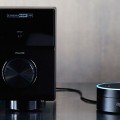
There was much more to the discussion at the annual RSNA conference in Chicago’s McCormick Place Conference Center this week than simply how to enhance image resolution or interpret BOLD MRI.
Speakers at several sessions addressed business model questions dogging American physicians as the industry moves away from fee-for-service to something that is best characterized as a persistently beckoning but moving, target — that of value-based care.
Speakers began with a nod to that moving target, made all the more elusive by the elections results. Will “repeal and replace” drive a meaningful change in the healthcare policy trajectory? The consensus is that regardless of red or blue and the specific legislative changes enacted, the unacceptable cost of health care (16.9% of GDP in the U.S.) and declining sustainability of the social services safety net speak too loudly to be ignored. Business as usual in the medical world — meaning fee-for-service — is not in the cards.
Radiologists have some special, if not entirely unique, skin in the game. Given the tangible nature of imaging equipment and services, radiology has been a natural target for cost reductions. However, physicians were quick to push back declaring that imaging costs represent a tiny fraction of the healthcare monster.
“Using MRI to assess early lower back pain used to be cost-prohibitive. That was when they were $1200. Today, they are $300, the cost of a couple of office visits,” said Dr. Rodney Owen of the Honor Health system. “Why not order one and have early visibility into the injury?”
It costs $10,000 – 12,000 per patient to care for a Medicare patient in a typical ACO. $300 per member is attributed to radiology expenses. Not a big portion.
“So this is not a place to cut, yet ‘high-tech metrics’ are attacked first, making it a target,” said Dr. James Whitfill of Innovation Care Partners.
Despite these characterizations of the cost of radiology as being a fraction in overall healthcare costs, they urged their RSNA counterparts to clear their heads of the volume-based template and get on board with the new imperative of value-based practice. As Dr. Whitfill explained:
Value = patient outcome/cost and that is the equation that will determine success or failure.
A move toward value necessarily sets in motion another trend – one where practice groups and hospitals are assuming more risk. Dr. Whitfill advised gradual modifications in risk assumption as steps along the pathway, pointing out that “those who attempt too quick a transformation, by taking on too much risk too early are at a high risk to fail.”
But not taking on the risk is not an option.
“You have to figure out how to be on the winning side of this risk,” he declared.
As the reimbursement structure forces closer scrutiny of imaging test orders and shifts to evidence-based appropriateness, the initial outcome is reduced revenue to the physician. Over time, as the value-based models mature to include more population screening and early diagnosis, the curve will begin to bend back more favorably to the provider.
“The risk assumption shift that occurs will impact the practice at a high level vs. the individual practitioner level, encouraging more teamwork, more collaboration,” said Dr. Gary Dent, who heads up the South Georgia Radiology Association in rural Georgia.
With a value-based focus and greater collaboration, more PCPs may reach beyond just checking the positive or negative result, and read the radiologists’ reports for greater insight.
“Old rivalries have no place in this new framework. Be a team, ” Dr. Owen said, echoing his co-presenters.
Technology, of course, is powering this move to value-based care. Dr. Owen foresees tremendous benefits to having outpatient imaging services integrated with aggregated labs, 24/7/365 access to imaging procedures and interconnected EHRs with embedded images available at providers’ fingertips.
And there is Big Data and artificial intelligence. Some may fear that patients will increasingly become statistics, defined by their histories, pathologies, and demographics, which will be aggregated and parsed within a massive database. But while Big Data may do more predicting and prescribing, this leaves health care professionals more to the task of care coordination and communication. Healthcare may actually feel more human.
In the Learning Center at McCormick Place, you can meet a machine that goes by the moniker, “Watson.” Possessed of cognitive reasoning skills, unfettered by a tight schedule or a sleepless night, is he the doctor of tomorrow?
In the end, we stand to both lose and gain in the humanity department. We lose some of the one-on-one relationship, private evaluation, and discussion with a trusted individual and to some degree, reliance on physician judgment when as we usher in Big Data metrics and machine-derived evidence-based care.
Physician presenters at RSNA hope that the gain is much bigger. Patients can win if medical practices offer a more patient-centric experience, partnership with a team that sees to their needs, are encouraged toward preventive care, earlier detection and treatment of disease, and a more holistic management of their health over their lifespan.
Shares2



